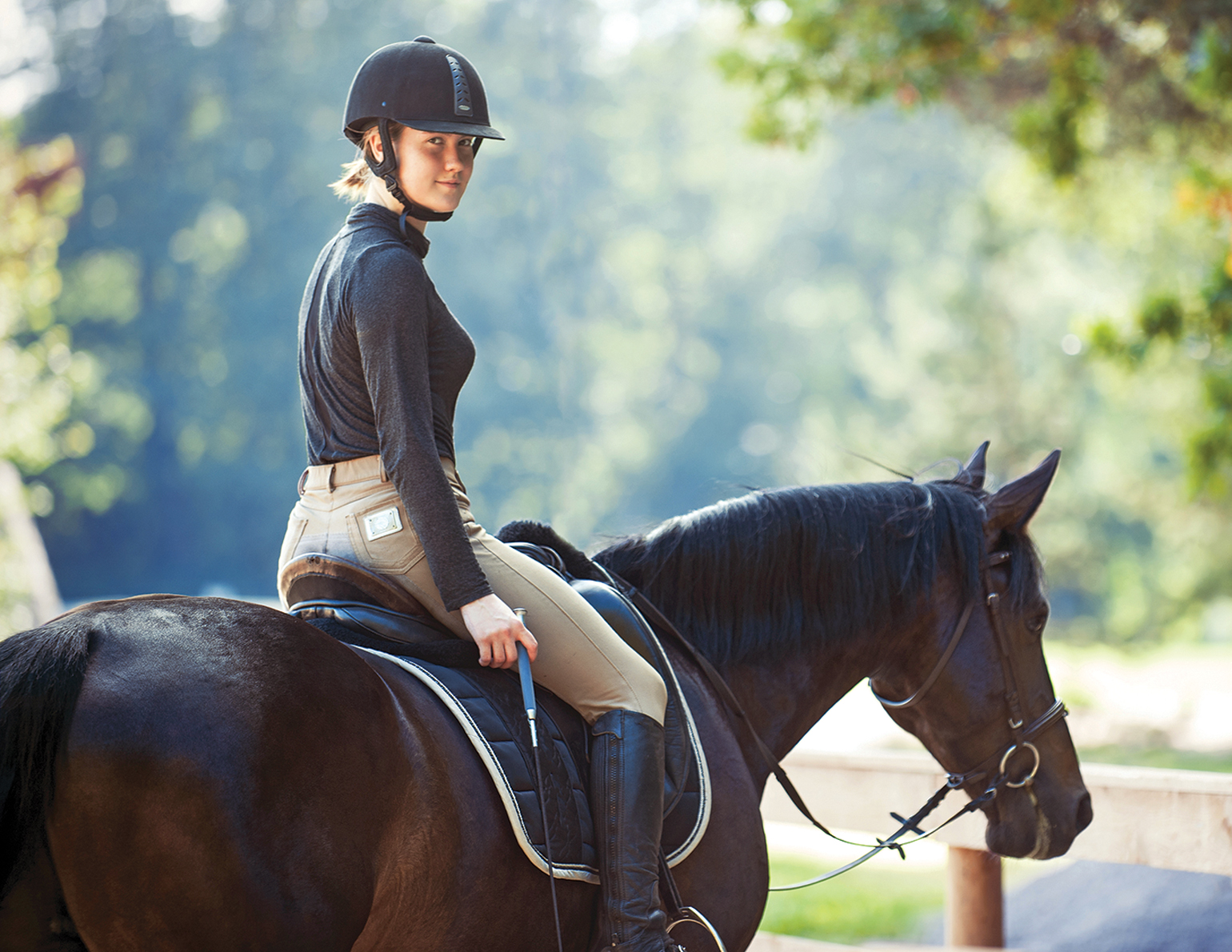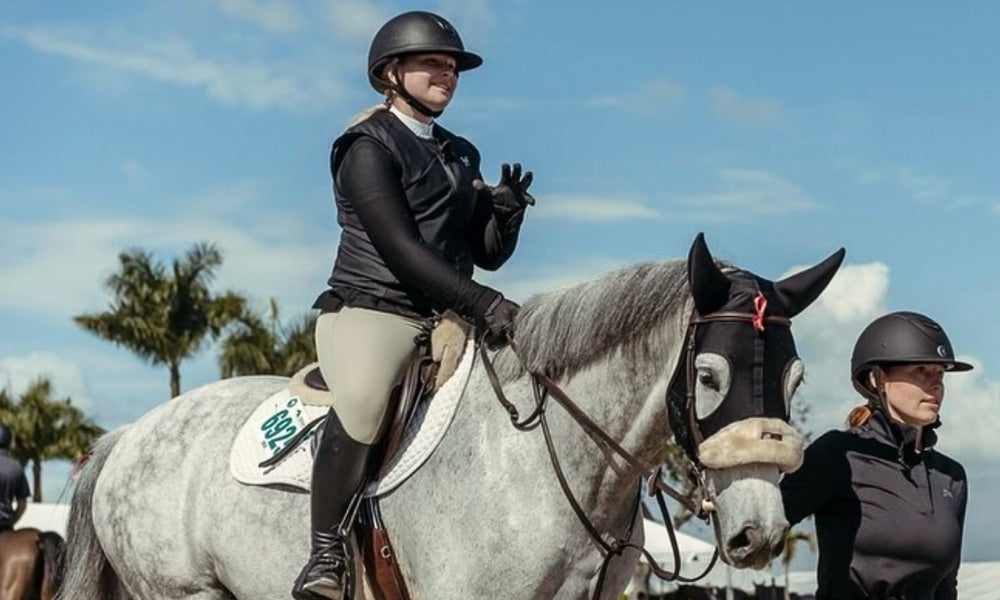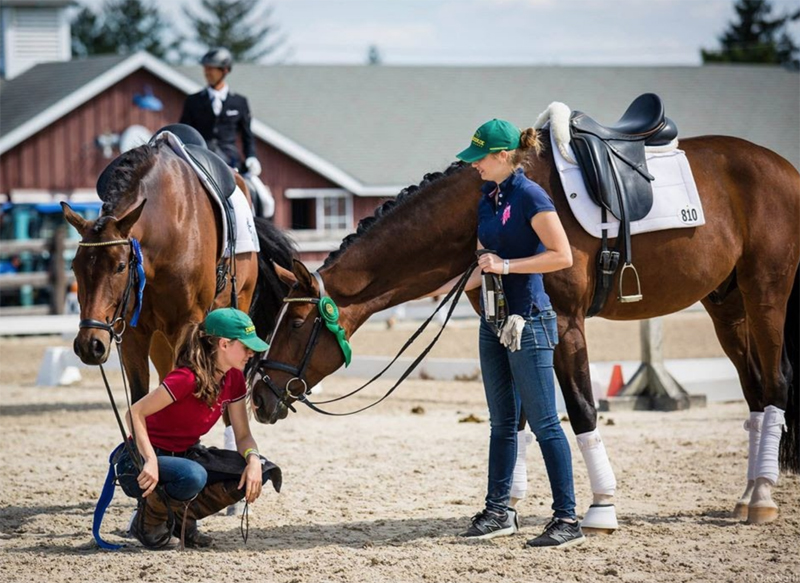Ever wondered how to be an equestrian rider? Start with understanding the basics of riding and caring for horses.
Equestrian riding is a rewarding and exciting sport. It combines skill, dedication, and a love for horses. Whether you’re dreaming of casual rides through the countryside or aiming for competitive events, becoming an equestrian rider takes time and practice. It’s not just about riding; it’s about forming a bond with your horse and learning the essentials of horse care.
This journey can be both challenging and fulfilling, offering countless opportunities for personal growth and adventure. In this guide, we will walk you through the steps and tips to begin your equestrian journey. From choosing the right gear to mastering basic riding techniques, you’ll find everything you need to get started.

Credit: rjclassics.com
Choosing The Right Horse
Choosing the right horse is crucial for every equestrian rider. The right horse can make your riding experience enjoyable and safe. This section will guide you through the important aspects of selecting the perfect horse for your needs.
Breed Considerations
Different horse breeds have different traits. Some breeds are known for their strength. Others are praised for their speed and agility. Think about what type of riding you want to do. For example, Thoroughbreds are great for racing. Quarter Horses excel in various equestrian sports. Research different breeds to find one that matches your goals and skill level.
Horse Temperament
Horse temperament is very important. A calm horse is ideal for beginners. Experienced riders might prefer a more spirited horse. Spend time with the horse before making a decision. Observe its behavior around people and other animals. A horse with a good temperament will be easier to train and handle.
Choosing the right horse involves careful consideration. Take your time and make an informed choice. Your perfect equestrian partner awaits!
Essential Riding Gear
Being an equestrian rider involves more than just getting on a horse. It requires the right gear to ensure safety and comfort. Essential riding gear includes a helmet, safety gear, saddle, and tack. Each piece of equipment plays a crucial role in your riding experience. Let’s explore these components in detail.
Helmet And Safety Gear
A helmet is the most important piece of safety gear for riders. It protects your head in case of falls or accidents. Always choose a helmet that meets safety standards and fits snugly.
- Make sure the helmet is certified.
- Check for proper ventilation to stay cool.
- Adjust the chin strap for a secure fit.
Besides a helmet, other safety gear includes gloves, riding boots, and body protectors. Gloves help you grip the reins better and protect your hands. Riding boots offer support to your ankles and prevent your feet from slipping. Body protectors safeguard your chest and back.
Saddle And Tack
The saddle is where you sit while riding. It should be comfortable and fit both you and your horse well. There are different types of saddles for various riding styles:
| Type of Saddle | Riding Style |
|---|---|
| English Saddle | Jumping, Dressage |
| Western Saddle | Trail Riding, Ranch Work |
Tack includes items like the bridle, reins, and stirrups. A bridle controls the horse’s head. Reins connect to the bridle and allow you to steer. Stirrups help you mount and stay balanced.
- Check the condition of all tack regularly.
- Ensure the fit for both you and your horse.
- Clean and maintain tack to prolong its life.
Having the right gear is essential for any equestrian rider. It enhances safety and improves your riding experience. Always invest in high-quality equipment. Happy riding!
Basic Riding Techniques
Basic riding techniques are crucial for every equestrian rider. They ensure safety and improve your connection with the horse. Mastering these basics will set a strong foundation for more advanced skills. Here, we’ll cover Mounting and Dismounting and Proper Riding Posture.
Mounting And Dismounting
Mounting a horse might seem daunting at first. But with the right technique, it’s simple. First, ensure your horse is calm and still. Stand beside the horse, facing its head. Hold the reins and mane in your left hand. Place your left foot in the stirrup. Use your right hand to grip the saddle. Push off with your right foot and swing your right leg over the horse.
To dismount, stop the horse and remove both feet from the stirrups. Hold the reins and mane with your left hand. Swing your right leg over the horse’s back. Slide down gently, landing on both feet. Always check your surroundings before dismounting.
Proper Riding Posture
Proper posture is essential for balance and control. Sit up straight in the saddle. Your shoulders should be back and relaxed. Keep your heels down and toes up. Your legs should be slightly bent, hugging the horse’s sides.
Hold the reins gently but firmly. Keep your hands low and close to each other. Your elbows should form a straight line from the bit to your hand. Look where you want to go, not down at the horse.
| Technique | Key Points |
|---|---|
| Mounting |
|
| Dismounting |
|
| Proper Posture |
|

Credit: www.vitafloor.com
Understanding Horse Behavior
Understanding horse behavior is essential for anyone interested in becoming an equestrian rider. Horses communicate in unique ways. Recognizing and interpreting their signals can enhance the riding experience. It also ensures a strong bond between rider and horse. This section delves into how to understand horse behavior better.
Body Language
Horses communicate mainly through body language. Their movements and posture tell a lot about their mood. Observing these subtle cues can help riders respond appropriately.
For example, a relaxed horse often has a soft eye and a lowered head. On the other hand, a tense horse might have rigid muscles and a high head. Paying attention to these details can improve communication.
Common Signals
Horses use specific signals to express their feelings. Recognizing these signals can prevent misunderstandings and ensure safety.
A horse flicking its ears back might be listening to something behind it. A swishing tail could indicate irritation. Understanding these signals helps in creating a peaceful riding environment.
Another common signal is pawing at the ground. This can show impatience or frustration. By interpreting these behaviors, riders can adjust their actions accordingly.
In conclusion, understanding horse behavior is crucial for effective riding. By learning to read body language and common signals, riders can form a deeper connection with their horses.
Building A Bond With Your Horse
Building a bond with your horse is essential for a successful riding experience. A strong connection ensures trust and understanding between you and your horse. This bond is built through consistent interaction and positive experiences. In this section, we will explore some key activities to strengthen your relationship with your horse.
Trust Exercises
Trust is the foundation of any strong bond. Start with trust exercises to build confidence. Spend time grooming your horse. This helps to create a positive association. Gentle brushing and talking softly to your horse can make a big difference.
Another effective exercise is leading your horse around. Walk your horse in familiar and new environments. This helps your horse feel safe with you. Always reward your horse for calm behavior. Treats or gentle pats are great rewards.
Groundwork Training
Groundwork training is essential for a strong bond. It involves working with your horse on the ground. This helps to establish respect and communication. Start with basic commands like “walk,” “stop,” and “back up.” Consistency is key in groundwork training.
Use a lead rope and halter for better control. Practice leading, stopping, and turning. Keep sessions short and positive. Over time, your horse will respond better to your cues. This will make riding more enjoyable for both of you.
Another useful exercise is lunging. This helps your horse understand your voice and body language. Work in a round pen or enclosed area for safety. Use clear commands and be patient. Your horse will learn to trust and follow your lead.

Credit: www.horsejournals.com
Training And Practice
Training and practice are the heart of becoming a skilled equestrian rider. Whether you are a beginner or an advanced rider, consistent training is essential. This section focuses on key aspects to help you improve your riding skills.
Beginner Riding Lessons
Beginner riding lessons are crucial for building a strong foundation. These lessons cover basic techniques and safety measures. A qualified instructor can guide you through the initial steps. Here are some key points covered in beginner lessons:
- Mounting and dismounting
- Basic riding positions
- Understanding horse behavior
- Safety protocols
- Basic commands
Starting with these basics helps you gain confidence. Remember, consistency and patience are key.
Consistent Practice Routines
Consistent practice is vital for improvement. Setting a routine helps you progress steadily. Here are some tips for creating a practice routine:
| Practice Element | Frequency |
|---|---|
| Warm-up exercises | Daily |
| Riding practice | 3-4 times a week |
| Cool-down exercises | After each session |
Follow a mix of riding drills, groundwork, and theory lessons. Each session should include:
- Warm-up exercises to prepare your body and the horse.
- Riding practice focusing on specific skills.
- Cool-down exercises to relax muscles and prevent injuries.
Regular practice helps you build muscle memory. It also improves your bond with the horse.
Safety Tips For Riders
Being an equestrian rider is both thrilling and challenging. Safety should always come first. Whether you are a beginner or an experienced rider, knowing safety tips is crucial. This section will cover important safety tips for riders, ensuring you have a safe and enjoyable riding experience.
Emergency Procedures
Always know emergency procedures. This includes knowing how to dismount quickly. If you fall, roll away from the horse. Keep your phone handy. Save emergency contacts. Know the nearest medical facilities. Practice emergency drills regularly. Teach others around you these procedures too.
Safe Riding Environments
Choose a safe riding environment. Avoid riding on slippery or uneven ground. Check for hazards like holes or debris. Ride in open spaces with good visibility. Ensure the area is free of loud noises. This can startle the horse. Always ride with a buddy or in a group. Inform someone about your riding location.
Joining An Equestrian Community
Becoming an equestrian rider is more than just learning how to ride. It is about joining a community. This community can provide support, friendship, and learning opportunities. Connecting with fellow riders can make your journey enjoyable and educational.
Finding Local Clubs
Start by searching for local equestrian clubs. These clubs often have resources to help new riders. They can guide you on where to start and how to improve. Use online directories or ask at local stables. You can also check community boards or social media groups.
| Resource | Description |
|---|---|
| Online Directories | Websites listing local clubs and events. |
| Local Stables | Places where you can ask for recommendations. |
| Community Boards | Bulletin boards in community centers or libraries. |
| Social Media Groups | Online groups for local equestrian enthusiasts. |
Participating In Events
Once you find a club, start participating in events. These events can be competitions, social rides, or training sessions. Events are great for meeting other riders. They also offer learning opportunities. You can see different riding styles and techniques.
- Competitions: Test your skills and learn from others.
- Social Rides: Enjoy riding with a group.
- Training Sessions: Improve your skills with guidance from experts.
Participating in events helps you stay motivated. It keeps you engaged and connected to the community. Always look for upcoming events and join as many as you can.
Frequently Asked Questions
What Is The First Step To Becoming An Equestrian Rider?
The first step is to take riding lessons from a certified instructor. This helps you learn basic skills and safety measures.
How Do I Choose The Right Horse?
Choose a horse that matches your skill level and riding goals. Consult with experienced riders or trainers for guidance.
What Equipment Do I Need For Horseback Riding?
You’ll need a helmet, riding boots, gloves, and appropriate riding attire. A well-fitted saddle and bridle are also essential.
How Often Should I Practice Riding?
Practice at least once or twice a week. Consistent practice improves your skills and strengthens your bond with the horse.
Conclusion
Becoming an equestrian rider takes time and dedication. Practice regularly to improve your skills. Remember to stay patient and enjoy the journey. Build a strong bond with your horse. This connection is key to success. Always prioritize safety and proper training.
Embrace each challenge as a learning opportunity. With effort and passion, you can achieve your riding goals. Happy riding!



